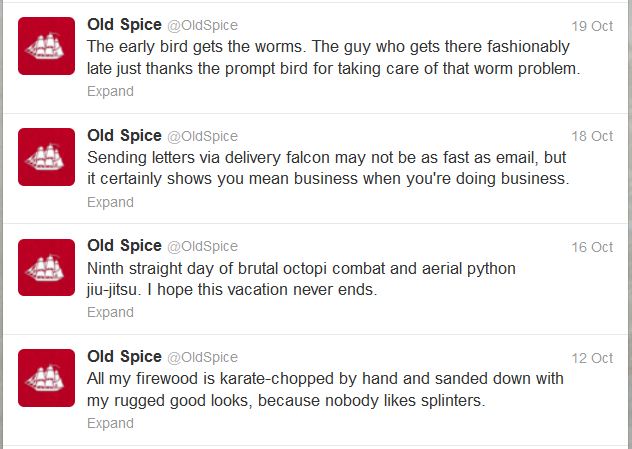As we work through a strategy and tactical project plan with our clients, there’s almost always a moment where things go a little quiet.
The attraction plan for building an audience is under control, they’ve got a great understanding of how each of their chosen social media sites actually works, but a large, worrying penny has just dropped. That penny is content shaped. What they’re realising is that the social media beast that’s being created is going to need feeding. Regularly. And forever.
How hard that actually is depends on who you are and what you do – there’s no doubt, for example, that Vogue have it easier than, say, a carpet manufacturer in this respect. But the vast majority of companies fall into the latter type of category; their product or service doesn’t intrinsically have mass appeal or fascination, and / or the day to day processes of their business don’t generate a constant flow of image or text-based assets.
So for most companies, the number one challenge of social media is content. Finding enough to say, that’s of genuine interest to their market, and which hasn’t already been said before by someone with more resources in this area than they have.
Your unique social media content strategy
Fortunately, there are answers. It IS possible to have a successful content strategy even on limited resources and in an “unglamorous” sector.
The starting point is always knowing your objectives for social media, and ensuring you’re on the right sites for your target market. Without a clear vision, it’s impossible to develop a content strategy.
Let’s take an example at this point: Old Spice aftershave. The social media presence they’ve built has been instrumental in rehabilitating the product, repositioning it from something loitering in the back of your Grandad’s bathroom cabinet, to a quirky, in-touch-with-the-zeitgeist brand.
Assuming that was the original objective, how do you translate it into content? Finding a lot of articles about aftershave is not only going to be difficult, but won’t help with what you’re trying to do. In this case, entertaining YouTube-based video is the cornerstone of the campaign, feeding into TV and magazine ads. So what do they do about Twitter? Great videos are all very well, but a Twitter audience demands more in terms of sheer volume – unless they were going to release a video a day, something else was needed.
The end result was a twitter feed of probably 80% original content, falling firmly into the “entertainment” category. The underlying messaging is “we’re modern, we’re original, we can look at things differently”:
Note: this is not an easy option. Keeping the energy up to produce original, left-field content is a big deal. But it is AN option, and one which has an equivalent for many industries; thinking about messaging first and content second can be very effective in solving the content problem.
Creating your own content
As a source of more substantial original content, you can’t beat developing a blog. This has many additional benefits, and is crucial for many – but it’s not easy either.
The biggest challenge here is that you’re competing globally. In some industries the online space is now so well supplied, by sites with enormous editorial resources, that it’s not realistic to compete.
For example, in the online marketing space there are sites like The Wall Blog which publish multiple articles almost hourly, and are usually the first to any breaking news. It’d be more than a full time job for us to compete with that, so we wouldn’t try.
The best fix for this is to be aware of your differentiators and find a niche; for us it’s tone of voice, a little originality, and ruthlessly excluding topics we know either won’t benefit our client base, or they won’t have time or resource to get to. Our blog is heavily informed by our consultancy and training work, too – it’s a great place to cover detailed but peripheral issues that come up in training, but which we don’t have time to go into detail about on the day.
It’s also helpful to focus on the space that you unarguably own – for instance, nobody else can provide insights into your own organisation like you can. Again, you need to work through the best format and approach for this.
If you offer an internship programme and are looking to attract more graduates, make “contributing to a regular video diary” part of the interns’ job description; this will provide you with lots of content which is perfect for your target market, and offers them an insight they couldn’t get from anywhere else.
Content curation
The alternative option is that you source and aggregate content – known as “content curation” – either as the core of your content strategy, or as a supplement to your home-grown content.
This shouldn’t be confused with “implementing an automated RSS feed” – that’s not a strategy, that’s a disaster. If you see, for example, an insurance company spewing out links on Twitter which one week are about a nightclub opening in Jakarta and the next week about blogging for SEO, that’s usually the result of hooking their Twitter account up to an auto-search. These are keyword driven but almost always fall victim to the law of unintended consequences, as search results rarely deliver the fascinating, targeted content that you’d imagined.
Doing content curation well
There are some great tools out there which can help you with themed curation – Google Alerts, Scoop.it, AllTop and many more – but to add real value, you need to be doing more. Your value add here comes from two areas: understanding your market’s needs, and ruthlessly editing to ensure you only reference the most interesting and relevant content; and understanding your industry, so that you can add your own unique commentary and perspective on the content that you share.
Once you have your objectives, messaging and content plan sorted, much of the pain goes out of feeding the content beast. If you’re UK based and would like help working through this process for your organisation, give us a call.








[…] View Full Article… http://www.rosemcgrory.co.uk […]